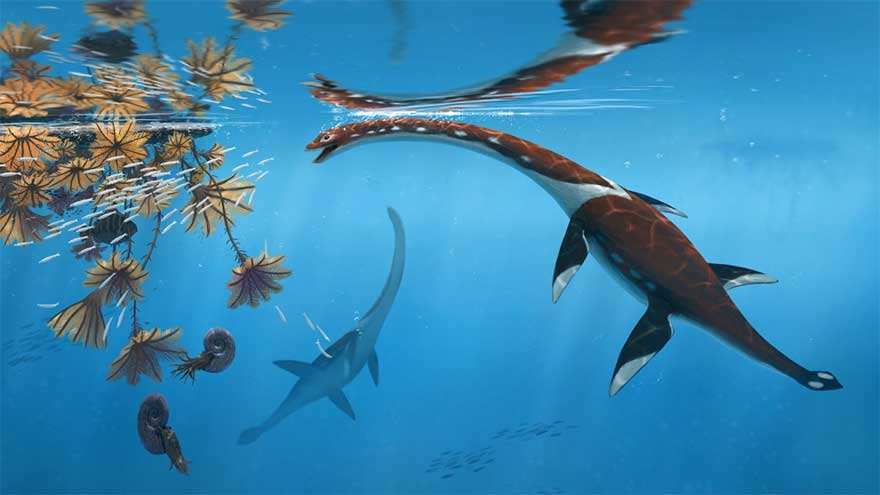Metro53 - Germany’s Posidonia Shale, a fossil rich formation dating to the Early Jurassic period, is world-renowned for its well-preserved marine animals including fish, marine reptiles, crustaceans and even soft-bodied organisms like squid.
Posidonia Shale fossils have been studied for nearly 500 years.
The formation has now offered up a fresh treat with palaeontologists describing a new marine reptile, Plesionectes longicollum, in a paper published in PeerJ Life & Environment.
The near-complete skeleton was originally excavated from a quarry in southwest Germany in 1978. The animal’s unique features have only just been realised.
“This specimen has been in collections for decades, but previous studies never fully explored its distinctive anatomy,” says lead author Sven Sachs of the Naturkunde-Museum in Bielefeld, Germany. “Our detailed examination revealed an unusual combination of skeletal features that clearly distinguish it from all previously known plesiosaurs.”
Not only is the animal part of a previously unknown species, but it represents a whole new type of plesiosaur – the group of long-necked marine reptiles that lived during the “Age of Dinosaurs”.
Plesiosaurs are less commonly found in the Posidonia Shale than other ancient marine reptiles like ichthyosaurs. The Plesionectes fossil is one of 13 skeletons, belonging to 6 plesiosaur genera, uncovered from the formation.
Plesionectes had a very long neck with at least 43 vertebrae. It also had a high number of vertebrae in the dorsal part of its spine. These and other features of the vertebrae suggest that Plesionectes is unlike other plesiosaurs known from the Early Jurassic.
The fossil has preserved soft tissue around the neck, tail and hindlimb of the animal. Unfortunately, the skull is mostly missing and was crushed during the fossilisation process.
Despite being a juvenile when it died, the animal is among the larger plesiosaurs found at the Posidonia Shale at about 3m long. It also the earliest plesiosaur from the region, dating to about 183 million years ago (mya).
Europe was not a single land mass, but a series of tropical islands separated by shallow seas during the Early Jurassic.
“This discovery adds another piece to the puzzle of marine ecosystem evolution during a critical time in Earth’s history,” says co-author Daniel Madzia from the Polish Academy of Sciences. “The early Toarcian period [184–174 mya] when this animal lived was marked by significant environmental changes, including a major oceanic anoxic event that affected marine life worldwide.”













